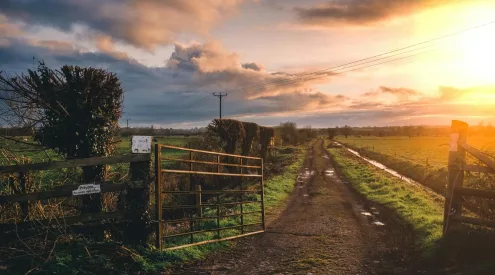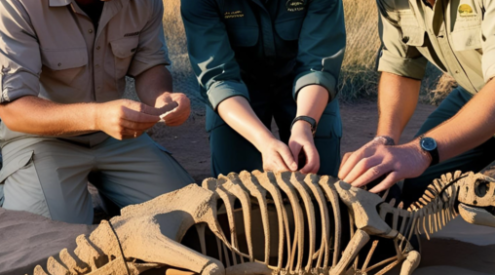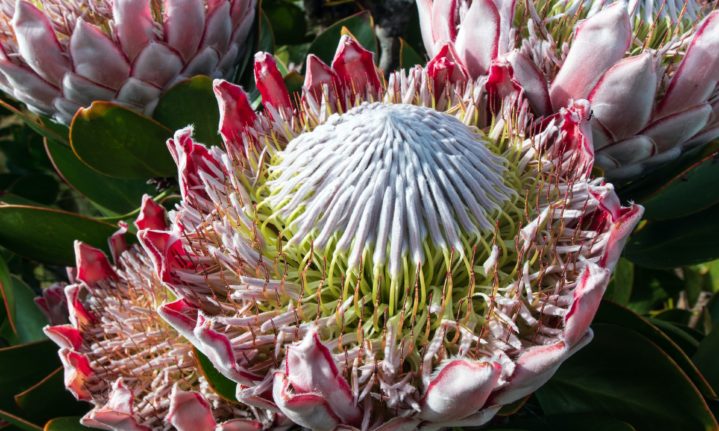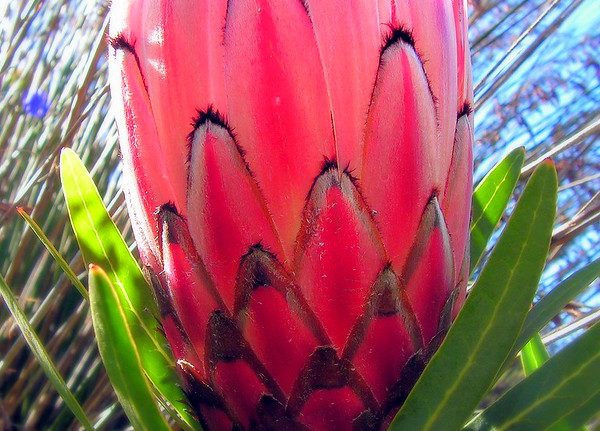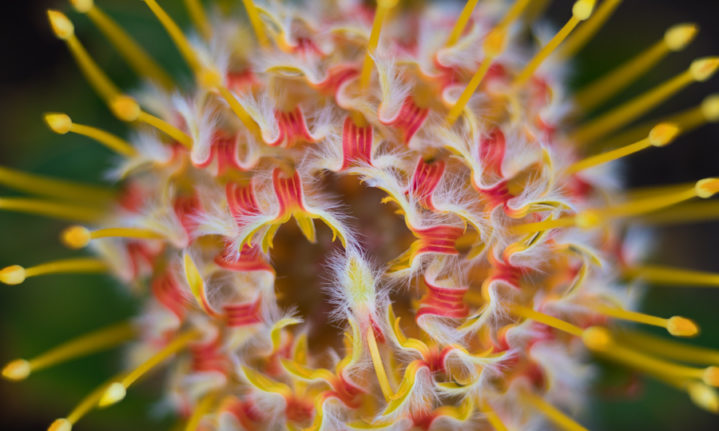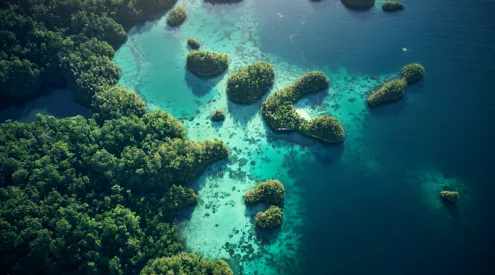With around 1464 species in the world, the protea is one of the most fascinating plants on earth and, of course, South Africa’s national flower. These incredibly beautiful fynbos plants attract various birds and insects like sunbirds and bees with their rich, sweet nectar. Proteas are scattered along the mountain ranges of South Africa, popping up in all their glory in different areas, from the Drakensberg to Table Mountain.
Let’s take a closer look at this iconic flower.
Their name was inspired by Greek mythology
The name “protea” allegedly stems from the name Proteus, son of Poseidon in Greek mythology, according to Culture Trip. He was a shape-shifter, an appropriate name seeing as there are so many different types of protea.
South Africa’s national flower
The king protea was named South Africa’s national flower in 1976 and has been the proud emblem of many sports teams, clubs and groups in the country. Interestingly, this plant is also endemic to Australia and South America. Australia has the largest collection of species on the planet—over 850. South Africa comes in at second place, with more than 330 species.
The king protea is the largest species and occurs in the Western Cape. It has a large flower head with petals resembling a crown and can grow up to two metres high. They can produce as many as 10 flower heads in a season.
Proteas need fire to flourish
Proteas, which are a type of fynbos, are referred to as a pyrophylic or fire-loving vegetation, and in need to burn every few years to survive.
Fire plays a role in germination and it also acts as a mineralising agent. Some fynbos species will die when it burns and regenerate from seed stored in the canopy that is only released after a fire, while other species build up seed stores in the soil, according to the Kogelberg Biosphere Reserve (KBRC). Seed germination is stimulated directly through heat and indirectly through changed environmental conditions caused by a fire.
Some species are endangered in South Africa
Several protea species are listed as endangered in South Africa. Out of the 1464 species, a whopping 637 are vulnerable, endangered or critically endangered. They include the Kraaifonein spiderhead protea and the Swartland sugarbush protea.
Photo series
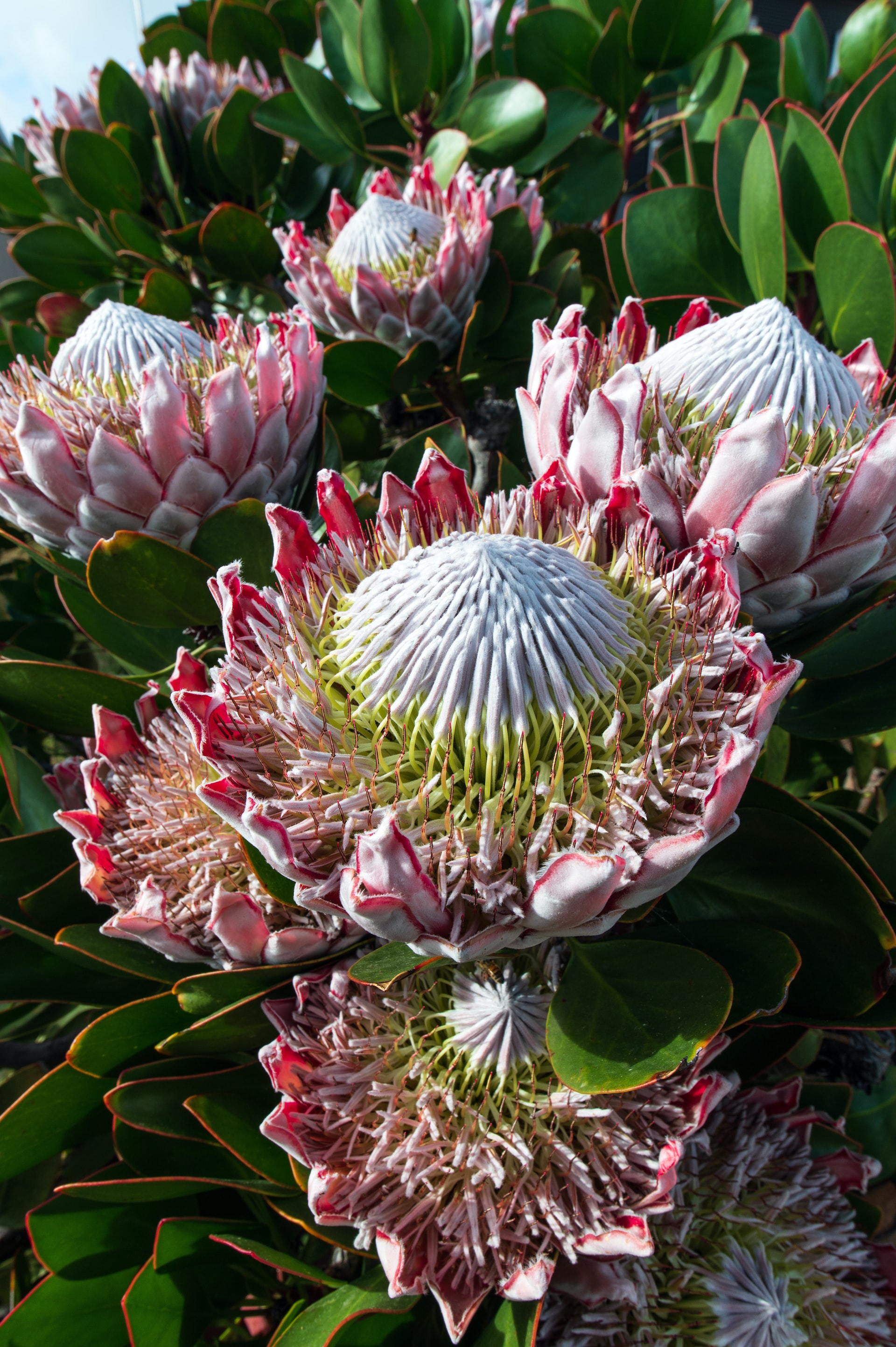
The king protea, South Africa’s national flower, is widespread in the Western Cape.
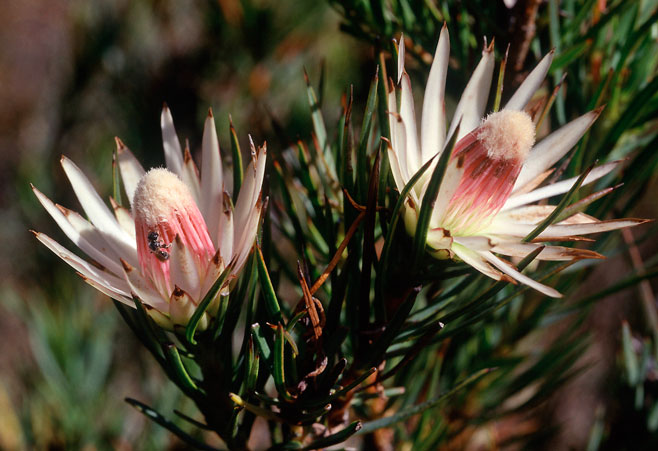
The endangered sugarbush protea.
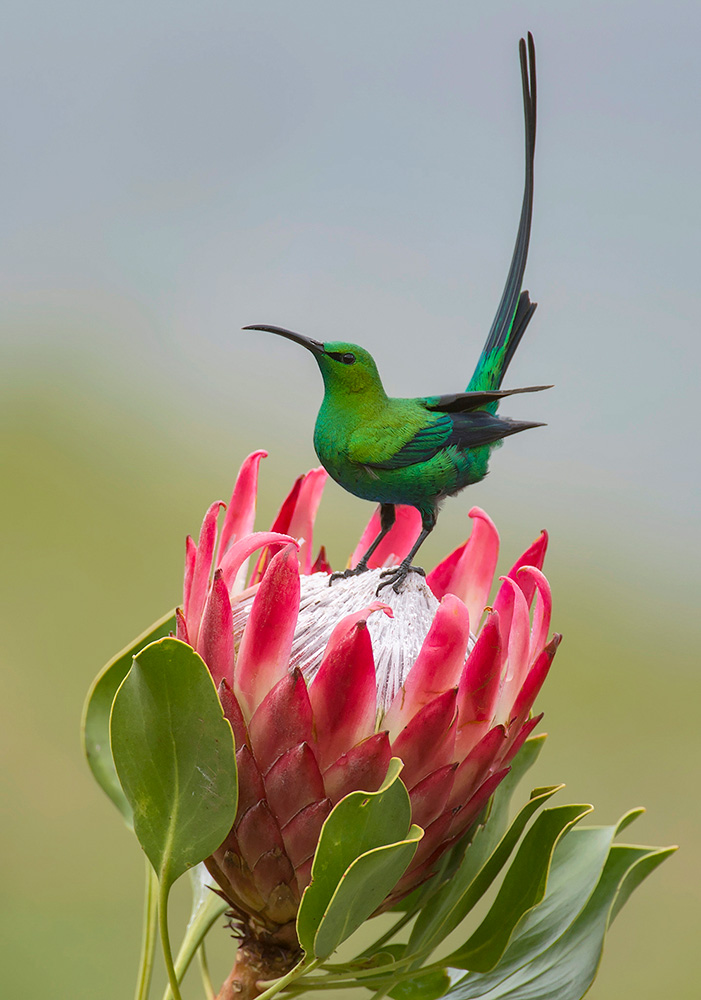
A malachite sunbird finds a landing spot. Photo by Jay van Rensburg
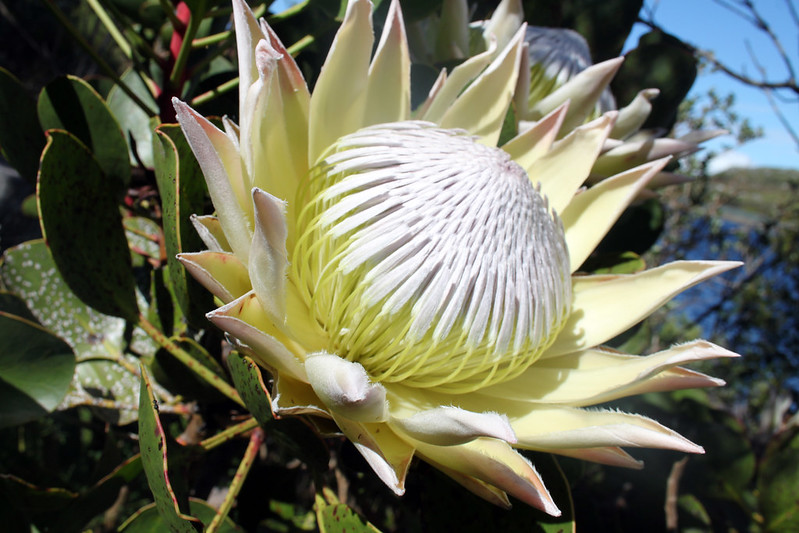
White king protea. Credit: flowcomm via Flickr
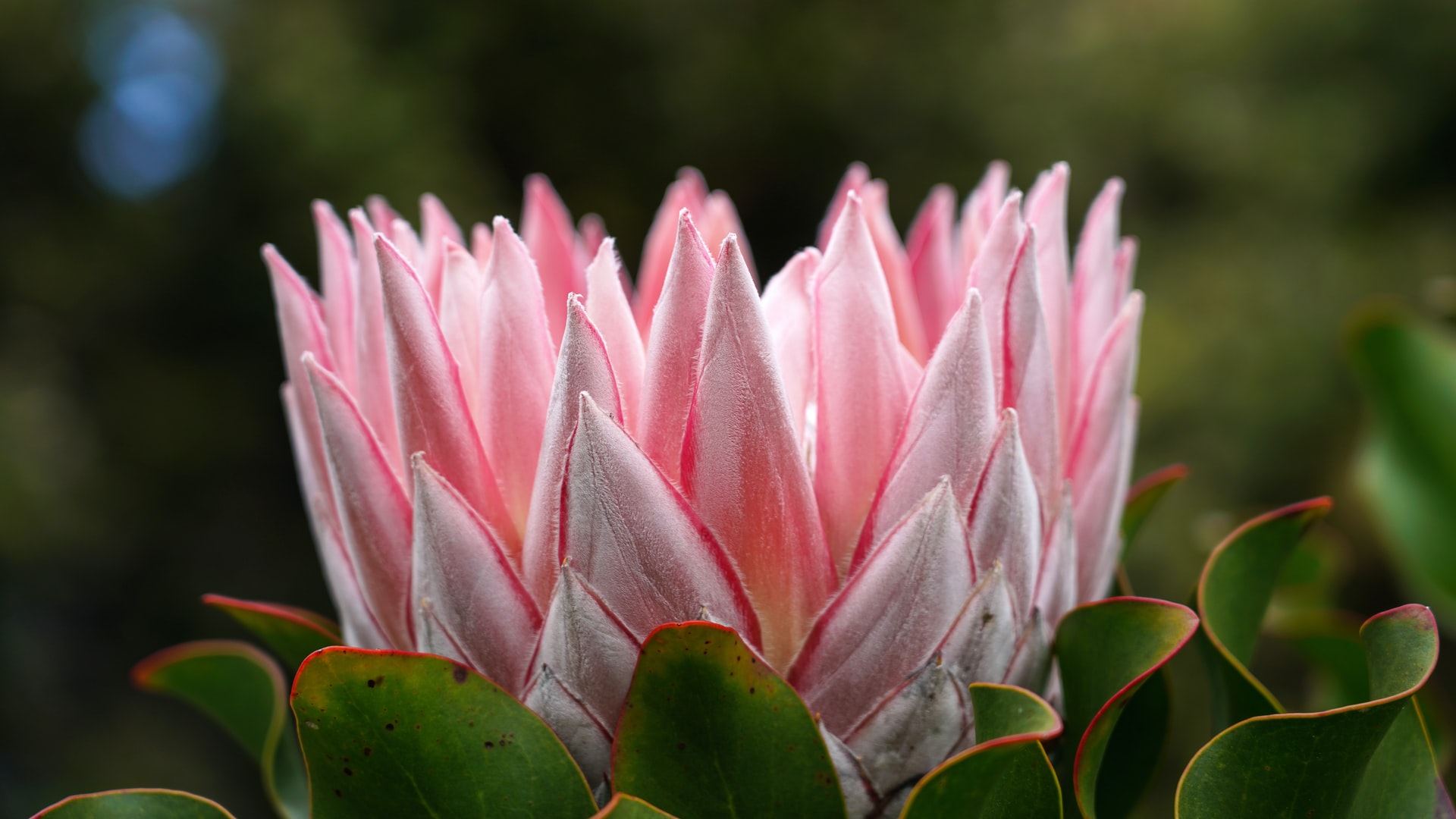
Proteas vary in colour and can range from a soft, pale pink to a vibrant, reddish-pink. Other species are orange, yellow or white.
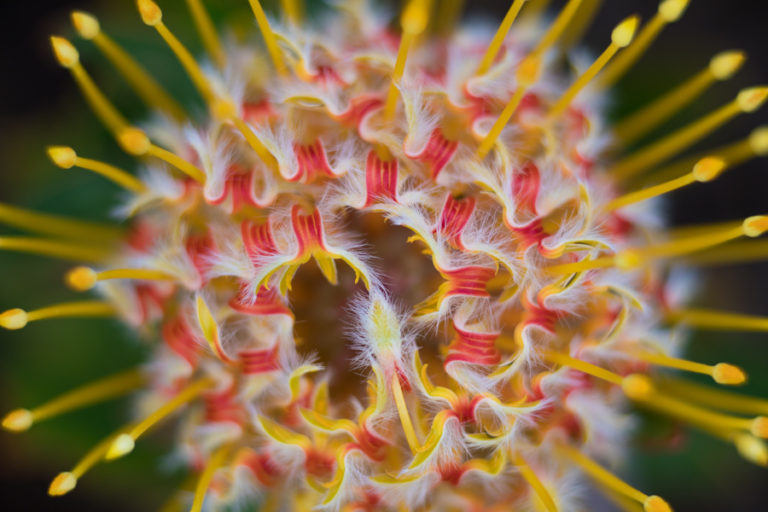
Pincushion proteas are a feast for the eyes – and birds.
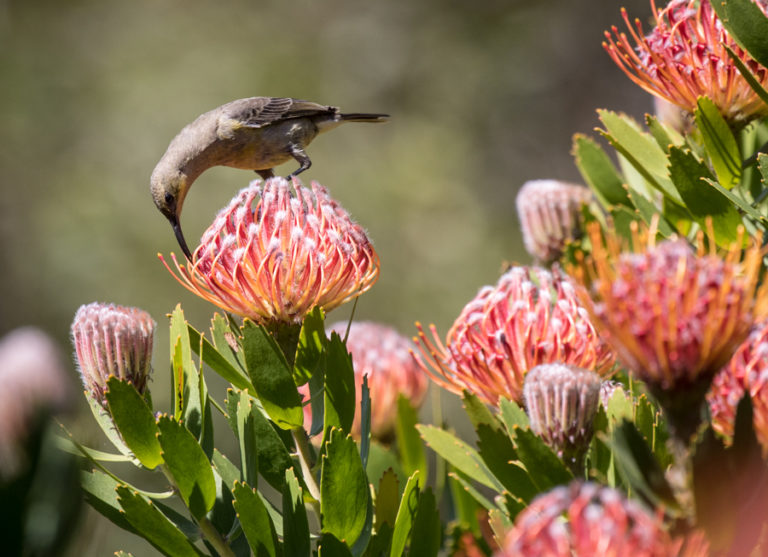
A Cape sugarbird feeds on the nectar of a pincushion protea.
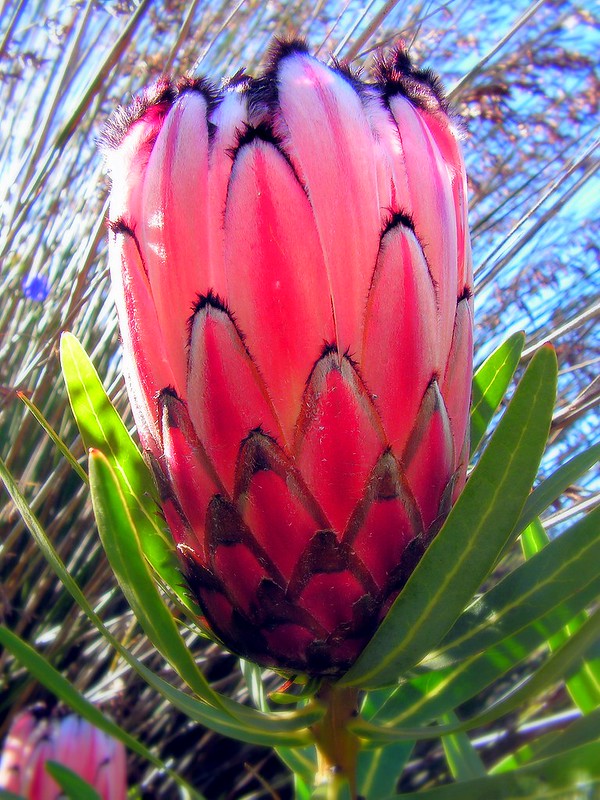
Queen protea. Credit: Lollie-pop via Flickr
Uncredited pictures: SANBI
ALSO READ


